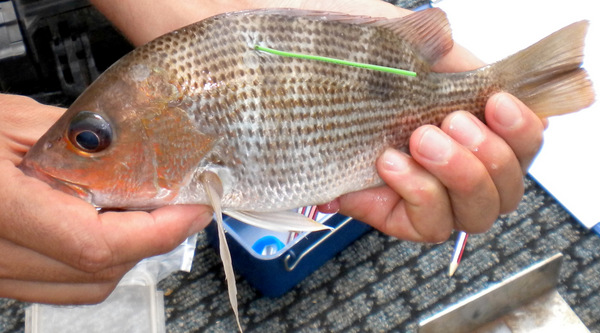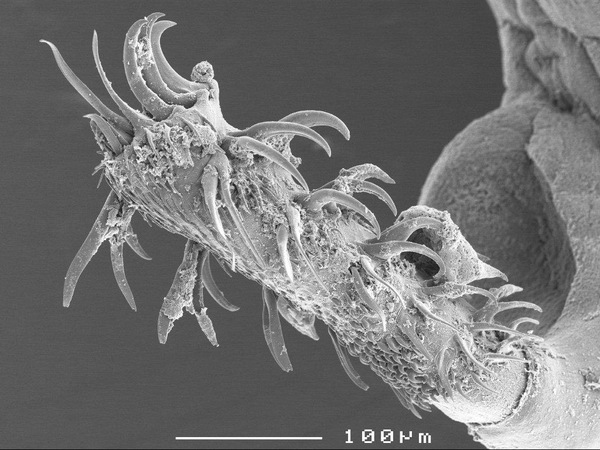PRODUCT AWARENESS: Tools We Use To Manage Fisheries
- NAFA
- Jul 1, 2014
- 3 min read
By KANE DYSART
A sound knowledge of fish stock structures is critical to managing marine fish sustainably across their distribution. Northern Territory fisheries scientists are using a suite of scientific techniques which, when combined, help identify the stock structure of vulnerable reef fish, and the connectivity between offshore adult and inshore juvenile habitat. Data collected through this research enables fisheries managers to make informed decisions concerning the sustainable management of fish stocks.
AGE AND GROWTH RATES A combination of length measurement and otolith (ear bone) examination is used to determine growth rates and age of fish. Otoliths contain a record of seasonal growth patterns, and can be aged much like a tree by counting the rings. Once removed from the fish, the otoliths are mounted in resin, finely shaved into transparent cross sections and viewed under a microscope where the growth rings can be counted, and the fish’s age determined. This information is related back to the size and maturity of the fish. Age studies provide fisheries managers with valuable information on fish population dynamics, and provide data such as the age structure of a stock, recruitment success, and the changes in populations due to fishing rates.
SEXUAL MATURITY Scientists assess the stage of sexual maturity and the developmental stage of a fish’s gonads by visual examination: ovaries in females are usually tubular and pink; testes in males are flat and white. The more sexually mature the fish, the larger the gonads. Fish that have not reached sexual maturity are often more difficult to differentiate. The information derived from these analyses, combined with age data, can be used in ascertaining the age and size at which fish attain sexual maturity, the time and place of spawning, and the duration of the cycle from the beginning of the development of the ovary to the final release of eggs. Together with fecundity estimates (estimated number of eggs produced), this information is used to calculate the size of a stock and its reproductive potential.
MICROCHEMISTRY Scientists also use microchemistry analyses on otoliths that retain a chemical “fingerprint” from the areas a fish has inhabited throughout its life. The chemistry of the water is recorded from their full distribution and compared with the deposits stored within the rings of the fish’s otoliths, giving a geographical snapshot. This is a valuable way of identifying where fish grew up as juveniles, and where they live as adults in discrete populations as regional water bodies (like different river catchments) have different chemical characteristics. The chemical fingerprint in a fish’s ear bones can be used in the same way as DNA tests to identify different populations that live in particular waters. This approach will be used in tandem with parasitology studies, and DNA tests, to determine any separation between the NT’s coastal snapper populations.
PARASITOLOGY Studying the linkages between parasites and reef fish species helps identify (or confirm) the existence of separate stocks of the same species. Fish parasites have emerged as a tool for use as “biological tags” to describe the mixing (or otherwise) of fish stocks from different areas. The theory is that if the number and type of parasites in two groups of fish are similar, then individuals probably share a common history, having mixed for a period. Alternatively, if the parasite composition is different between groups then they may well be from discrete populations that have not mixed, and therefore have not been exposed to similar infestation risks.
DETERMINING CATCH AND HARVEST RATES Catch and effort data from commercial and charter fishing log books and recreational fishing surveys help to determine the rate fish stocks are being fished and harvested. Changes in catch levels, in the amount of effort being exerted by fishers and (importantly) in the ratio of catch per unit of effort, are important signals of fishery health. Just as fishers notice how tides and seasons can change their catch success, scientists monitor longer term trends to detect consistent trends in catch rate data that gives a clear signal of whether a resource is being depleted over time. Tagging studies also provide valuable information on exploitation rates, growth rates and fish movement. Once a large enough sample size has been established, the data from a combination of the above-mentioned techniques is entered into a computer stock assessment model along with information on age at maturity, harvest levels and growth rates. Using these techniques provides fisheries managers with a comprehensive status report on the health and dynamics of the stock structure of a species, including the degree of mixing of fish from different areas. This in turn helps develop appropriate management arrangements to protect and manage northern Australia’s valuable fisheries resources, and ensure high-class recreational fishing experiences in the future.





